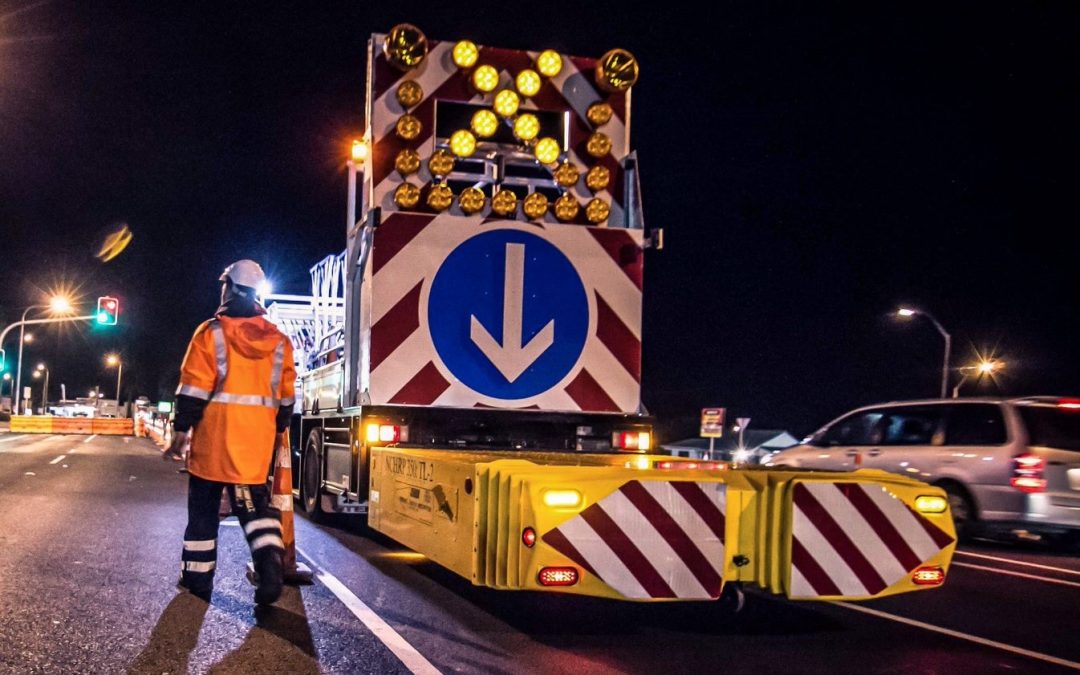Vehicles are the most diverse piece of equipment used in the Temporary Traffic Management industry. They transport crews, signs and other TTM equipment needed to run sites and are also essential for the safe setup of most sites on the road, so what is the new traffic competency model help the industry and how will is help promote safety in the industry.
One of the most important roles TTM vehicles play on site is protecting workers from other vehicles on the road. They primarily do this by shadowing any workers on the back of other trucks or workers in the live lane. This keeps workers safe on site. As the industry has a large turnover of workers, the need for the new Training and Competency Model in this area is critical. One of the most high-risk activities undertaken is when crews are out on the road setting up and working in and around live traffic. If mistakes are made it can have drastic consequences for Traffic control workers or the public. The ability to drive vehicles correctly in a TTM setup and removal is key to keeping everyone safe.
There are 2 main hazards during this activity:
- – The live traffic driving around the mobile operation.
- – The vehicles involved in the mobile operation to the live traffic.
As the setup of the site must take place in live traffic, and the mobile operation must use vehicles to carry signs and equipment, neither of these hazards can be eliminated, so effort must be made to isolate and minimize the risk of an incident.
Companies who operate on the road in New Zealand are aware of these hazards and have worked hard to train crews to carry out these jobs safely. The training for each traffic control company is currently developed and delivered internally using CoPTTM guidelines, meaning that the responsibility of creating competency for those working on the road sits with each individual company. In turn, each company has its own content and way of training workers, resulting in a disparity between the levels of competency and training.
The new NZTA Training and Competency Model is going to be key to training in the future of the industry.
So, what is going to change with the new Traffic Competency Model? To the best of our knowledge, with the new training there is going to be a new learning block. In my opinion, this will help organisations keep training consistent across the industry. There will be a NZQA Unit standard (still in development) attached to this training, which each driver can achieve when successfully demonstrating the required skills. This knowledge will include:
- – Health and safety processes relevant for the role
- – Knowledge of relevant CoPTTM requirements for mobile operations (requirements for Category A, B and C environments)
- – Roles of drivers of tail pilot, shadow, work vehicles and reasons why they are important
- – Work methodologies for mobile operations
- – Completing vehicle checks (COF, RUC, seat belts, operating an arrow board, LAS, AWVMS, appropriate, signage eg PASS WITH CARE)
- – Use of horizontal arrow board
- – Use of LAS
- – Use of AWVMS
- – Operation of devices (eg strobes, LAS, hazard lights, indicators, headlights)
- – Mobile operation distances
- – Positioning of work, shadow and pilot vehicles (eg relative to crests/curves)
- – Communication with other members of the operation (timely, effective, using RT)
- – Protecting personnel on foot
- – Taking a lane
- – Dealing with common situations (eg emergency vehicles passing mobile operation)
- – Issues with mobile operations (eg blocking lane and causing issues with passing traffic)
- – Reporting crashes and completing or assisting with an incident report where required (eg for vehicle crashes)
- – Record keeping (onsite records, logbooks etc)
This training will take around 4 hours and it will be delivered by a TTM Mentor.
From this training we will get some real results for the industry which could include:
- – Workers with proven skills
- – An official record of learning which is recorded by NZQA (if used)
- – A structed way for TCs to upskill themselves to TTM drivers
- – A way for companies to prove TTM driver compliance and competence
- – Safer working environments for traffic controllers and the public
These are all great things for the industry as a whole and will standardize the training.
In my opinion, the next step to the Training and Competency Model could be to make this a warranted position with an official TTM driving assessment. This could be similar to a ‘Wheel’s Tracks and Rollers’ qualification which NZTA currently do. Regardless, the Traffic competency model will assist the industry nationwide and will benefit traffic control companies across the board. With the other specialist changes coming in the traffic industry, it would be wise to jump on board quickly and not get left behind the competition. See more on these changes here.
(The New Training Competency Model changes are still in development, the exact dates for this are still TBC from NZTA but the outlines I’ve given above have been provided in the Training and competency model found here. To get updates about the training and other related subjects the email subscription link can be found here.
